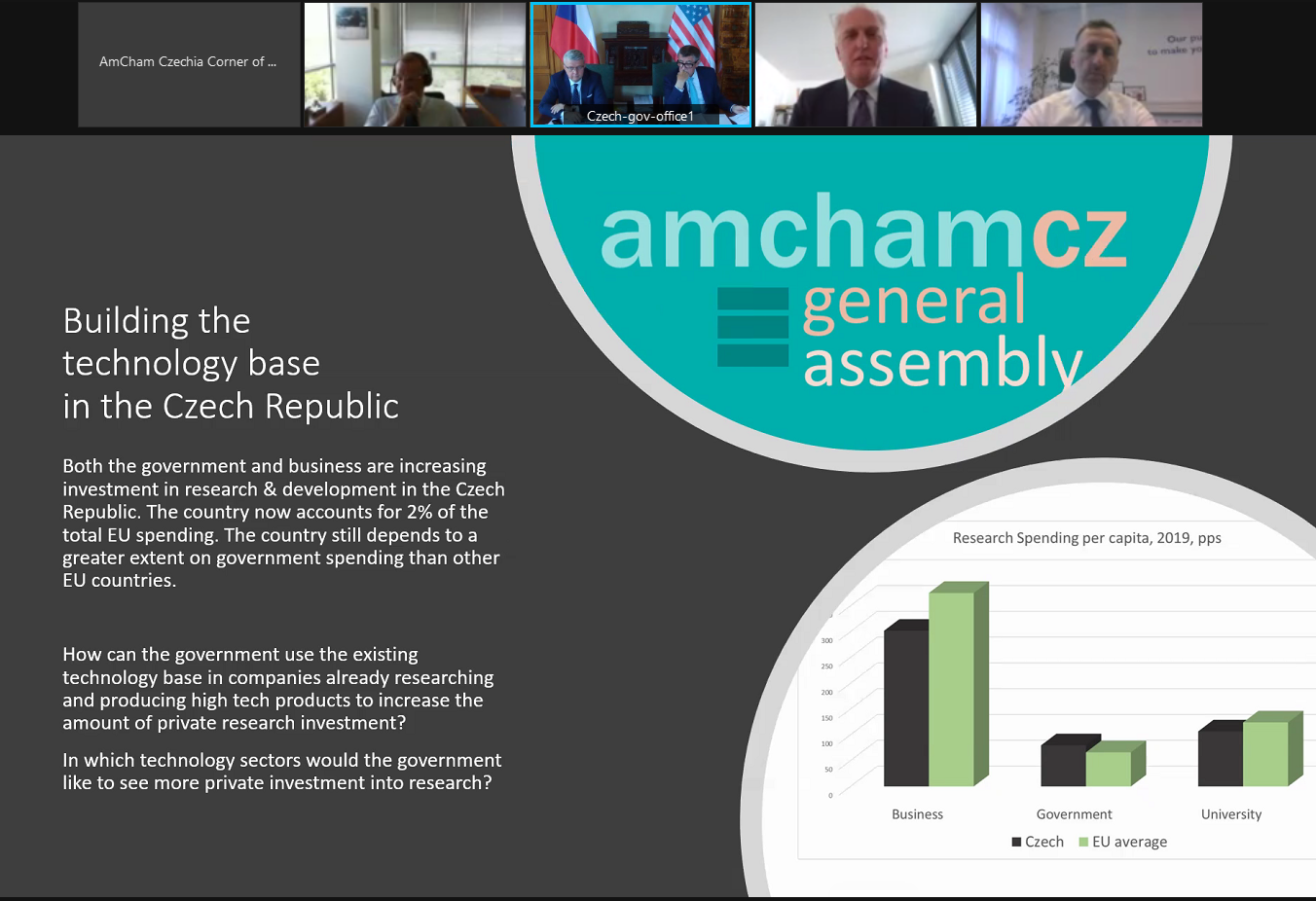
Prime Minister summed up the lessons learnt so far: trace the virus, do sequencing, keep looking for mutations, and continue to vaccinate, and also be prepared for revaccination.
Generally, the government plans to focus on digitization and health condition of citizens, including prevention. The Government plans to invest in health care, including prevention centers or educational activities targeting general population.
Minister of Industry and Trade and Vice-PM Karel Havlíček said that public expenditures on R&D are at the highest level in the past 20 years. In 2016, Government expenditures on R&D were at 26bn CZK. 5 years later, in 2021, the expenditures are at 39.5bn CZK. Public expenditures generate private expenditures. Total Government expenditures on R&D (GERD) are at 116bn CZK (2% of GDP). The plan is to reach 2.5% of GDP in 2025. The Czech Republic has technically oriented labor force and this is attractive for investors, not cheap labor. The question is how to motivate young people to study technical fields. The Government has introduced the concepts of Industry 4.0 and Construction 4.0, including universities, companies, research organizations. There are hundreds of people in technical research positions in Brno companies such as Thermo Fisher Scientific or Honeywell. This is the right motivation.

Vice PM Havlíček also said, among others, that Brno seems to fare better than Prague in terms of the innovation ecosystem, infrastructure. “Within the National Recovery Plan, 7bn CZK is allocated with 40% for green transition, 22-23% for digitization.“ Besides the recovery tool, there are also new EU programs available, REACT, structural funds, and more. Building the technology base and capacity in the Czech Republic is not as much about the quantity of companies in incubators, but about results.
“The Czech Republic is the best place in Europe for investment,” Prime Minister Babiš concluded the session.